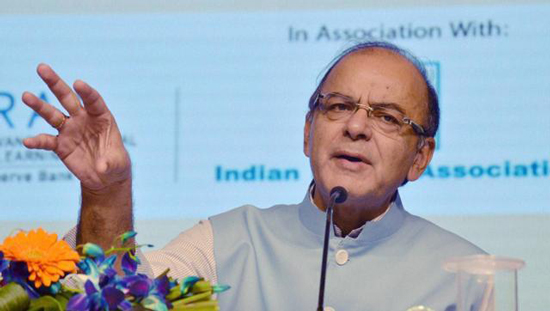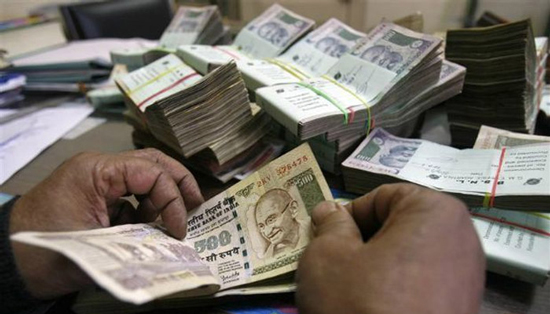New Delhi – Finance Minister Sitharaman said, ‘We have presented a budget, in the 75th year of independence that will lay the foundation for the next 25 years.’ She added, ‘We have made it our priority to present a budget that sustains the country’s economic development.’ On the other hand, Prime Minister Narendra Modi welcomed it, saying it is a development and employment-oriented budget. The industry is also praising the budget and the industry leaders are confident that the country will reap long-term benefits of this budget with consistency and clarity in policy.
 After a good start by the openers in cricket, the challenge for the team is to keep up the momentum in the middle overs without losing too many wickets before the onslaught in the last overs. In the 2022-23 budget, an attempt has been made to maintain such a balance and continuity, said Union Finance Minister Nirmala Sitharaman. During this financial year, the country is progressing at a growth rate of 9.2%. This is the fastest-growing economy among countries with large economies, Sitharaman said.
After a good start by the openers in cricket, the challenge for the team is to keep up the momentum in the middle overs without losing too many wickets before the onslaught in the last overs. In the 2022-23 budget, an attempt has been made to maintain such a balance and continuity, said Union Finance Minister Nirmala Sitharaman. During this financial year, the country is progressing at a growth rate of 9.2%. This is the fastest-growing economy among countries with large economies, Sitharaman said.
Saying that the budget allocations had to be made without much thought to the fiscal deficit, given the Corona crisis, the finance minister informed that the fiscal deficit for the 2022-23 budget would be 6.4%. The actual capital expenditure in this budget will be ₹ 10.68 trillion. Sitharaman pointed out that this amount is about four per cent of the country’s GDP.
At the same time, no changes have been made in income tax. It is claimed that the middle class is frustrated because of this. But Sitharaman defended his decision, saying that there has been no tax increase in the last two years, given the Corona crisis. Sitharaman also pointed out that the government had kept inflation under control during this period.
In the next 25 years, the country will celebrate its centenary of independence. At that time, half of the country’s population will be living in cities. With this in mind, provision has been made in this budget for urban development. Special schemes are being implemented to boost production by creating a conducive industry environment. Industry dignitaries have claimed that this budget is an important step towards building the country’s future.
Gati Shakti (National Master Plan for Multi-modal Connectivity)
By stating that the Gati Shakti project is of great importance in developing the country, Finance Minister Sitharaman said that it has seven engines. Sitharaman expressed confidence that all the seven engines, roads, railways, airports, ports, public transport, waterways and transport facilities would work in unison to accelerate the country’s economy.
The Centre will provide interest-free loan assistance of ₹ 1 trillion to the states for infrastructure development. The finance minister said the funds would be used for the Prime Minister’s Gati Shakti Yojana projects. In the financial year 2022-23, a network of 25,000 kilometres of roads will be constructed in the country. ₹ 200 billion will be raised for this. Also, 2,000 kilometres of railways will be built under the ‘Kavach’ initiative. Sitharaman further said that 400 Vande Bharat trains would be manufactured in the next three years to provide a better travel experience. On the other hand, 100 cargo terminals will be set up for logistics and related services, announced Sitharaman.
Significant increase in provision for defence
In the 2022-23 budget, about ₹ 5.25 trillion has been allocated for defence. In the previous budget, ₹ 4.78 trillion was announced for defence expenditure. That is a 9.8% increase in defence spending this year.
A fund of nearly ₹ 1. 524 trillion has been set aside to purchase new weapons, aircraft, warships and other defence equipment. 68% of it has been earmarked for domestically produced weapons and defence equipment.
About 25% of the total outlay announced for defence expenditure will be spent on defence-related research. The Union Finance Minister announced that the private sector would also be involved.
Finance Minister Sitharaman said that the government is committed to reducing imports for defence and domestic production of defence equipment and weapons.
Defence Minister Rajnath Singh has welcomed the budget. It is a matter of satisfaction that 25% has been allocated for defence research, said Rajnath Singh.
Increase of agricultural credit limit
The Finance Minister announced a provision of ₹ 18 trillion for agricultural loans in the 2022-23 budget, significantly increasing the provision of agricultural loans for ₹ 16.5 trillion in the previous budget.
Also, ₹ 1.32 trillion has been allocated for agriculture. Of this, ₹ 680 billion has been set aside for the Prime Minister’s Kisan Yojana. Urea subsidy has been increased by ₹ 632.22 billion.
The Central Government is making special efforts to bring about sophisticated changes in agriculture by using technology related to agriculture. Citing this, Sitharaman announced the Kisan Drones Scheme. Under this, investments will be raised from the public and private sectors. Through this, drones and other state-of-the-art technology will be provided to the farmers, said the Union Finance Minister.
In addition, separate funding will be provided for start-ups involved in agriculture and rural areas, Sitharaman said. A fund of ₹ 14 Billion has been announced for the Ken and Betwa river connection project.
30% tax on cryptocurrency income
The Reserve Bank will launch a ‘digital currency’ using blockchain technology, announced Finance Minister Sitharaman. Except for the country’s official digital currency, Finance Minister Sitharaman announced a tax of 30% on all digital assets and the income derived from cryptocurrencies. Sitharaman grabbed everyone’s attention by making this announcement while presenting the budget.
Over the last few months, the central government seems to have taken a firm stand on cryptocurrency. The announcement of ‘Digital Rupee’ while announcing the budget for 2022-23 is a big step the government took in that direction. This will boost the ‘digital economy. This will allow the currency to be used more efficiently and reduce costs, said Sitharaman.












